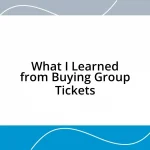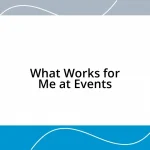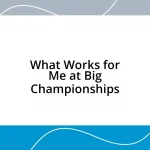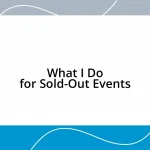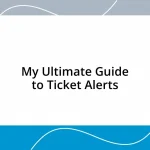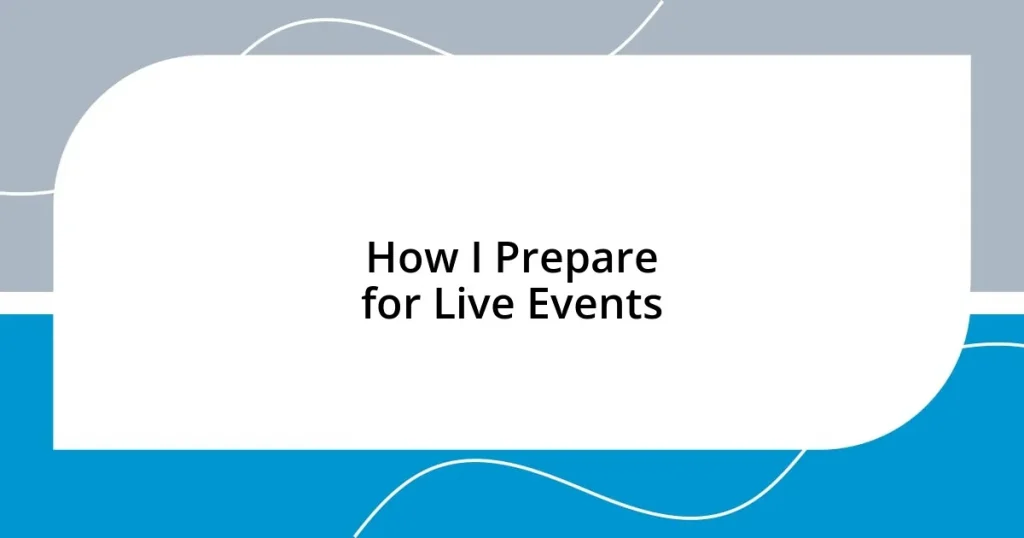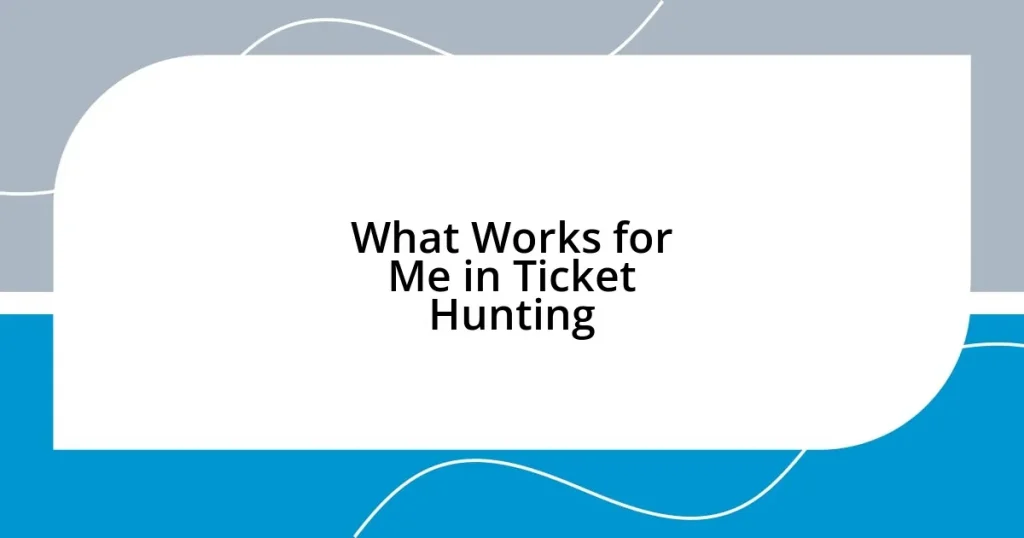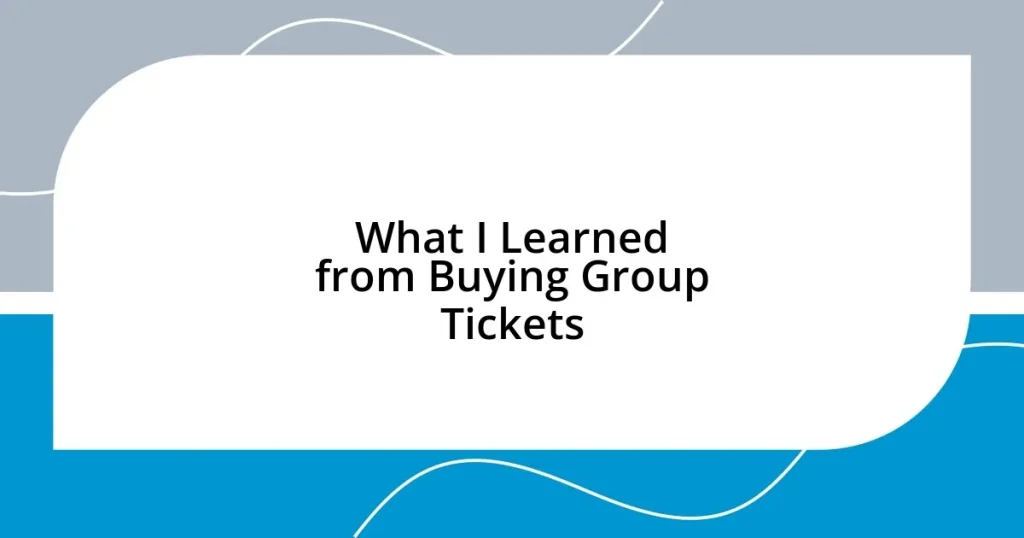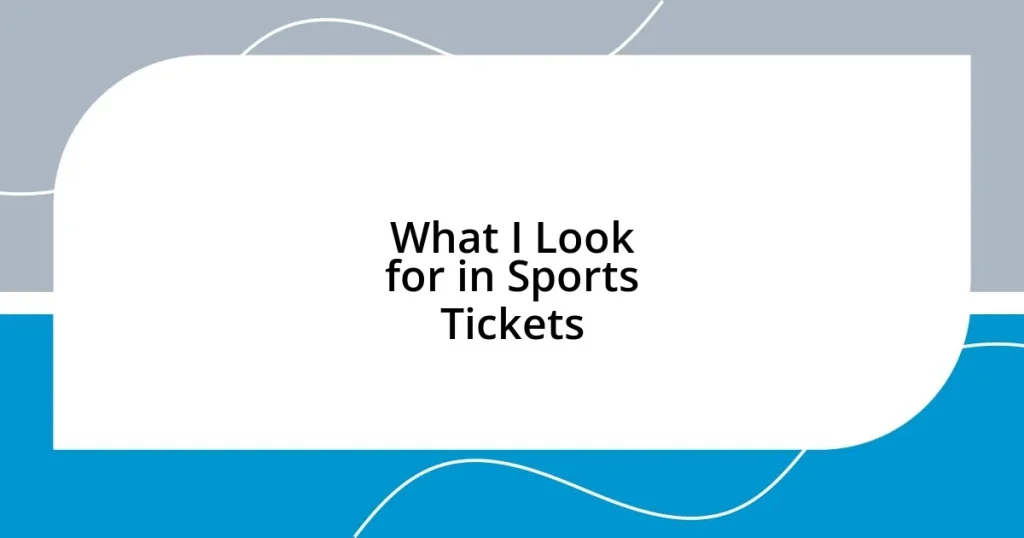Key takeaways:
- Understanding event requirements, including dietary restrictions and technical needs, is crucial for creating memorable experiences.
- Setting clear, specific, measurable, and relevant goals enhances event planning and execution.
- A detailed event timeline with defined roles and responsibilities promotes effective communication and organization.
- Post-event follow-up, including personalized emails and discussions, strengthens connections and fosters ongoing relationships.
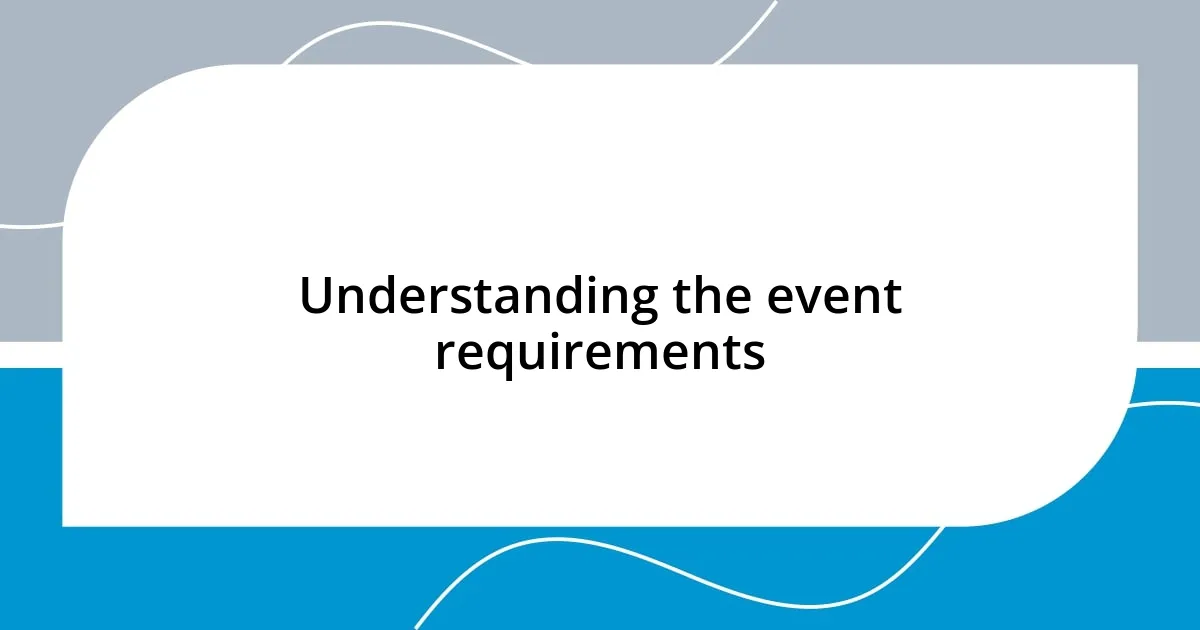
Understanding the event requirements
When I think about understanding the event requirements, I can’t help but reflect on that one time I missed a crucial detail for a client’s gala. It was a painful lesson; I had overlooked the need for dietary restrictions. Now, I always make it a priority to discuss all logistical aspects, from the venue’s capacity to technical needs. Isn’t it vital to ensure that everything aligns with the attendees’ expectations?
As I dig deeper into the requirements, I often wonder about the audience’s emotional journey. After all, events aren’t just about logistics; they’re about creating memorable experiences. I remember a conference where I engaged with participants before the event to gauge what they were hoping to get out of it. It transformed my planning, ensuring that I met, and even surpassed, their expectations.
Finally, I believe communication is key. Connecting with all stakeholders—like vendors, sponsors, and even speakers—helps paint the full picture of what’s necessary for success. I’ve ended up in scenarios where assumptions led to chaos. By asking the right questions and clarifying ambiguous points, I’ve seen firsthand how quickly a potentially sticky situation can be resolved, keeping everything on track and everyone happy. Isn’t that what we all strive for?
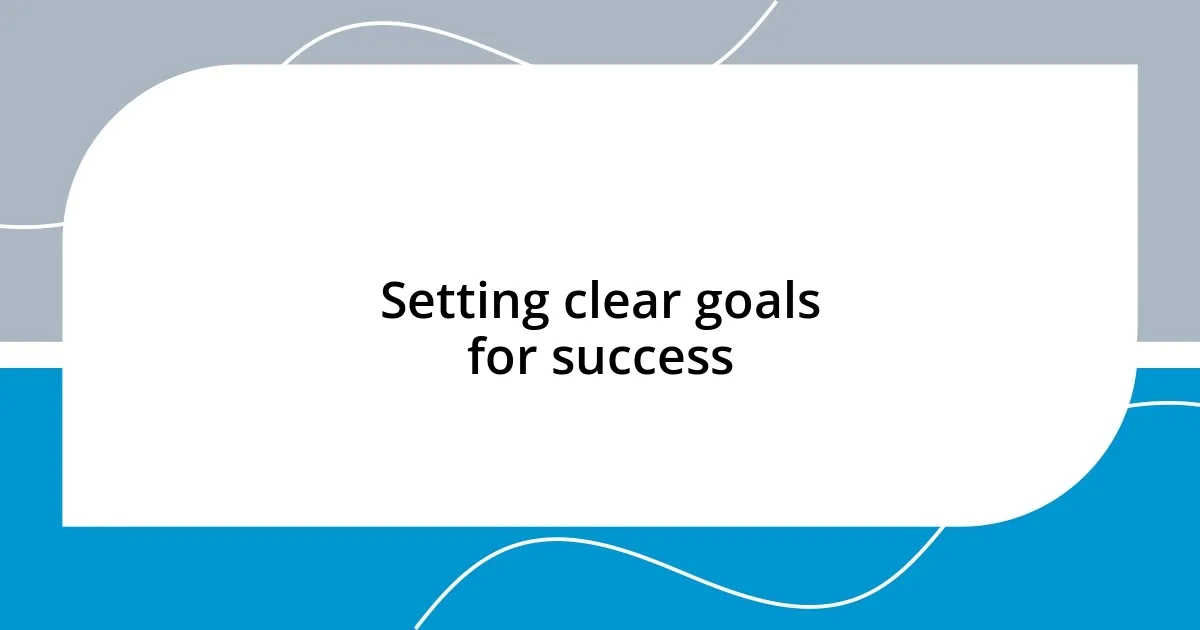
Setting clear goals for success
Setting clear goals is fundamental to my success when preparing for live events. I remember one event where we aimed to increase brand engagement through live polling. By establishing a clear goal of achieving a specific participation rate, I could tailor our strategies accordingly, ensuring that our efforts were both focused and measurable. This experience reinforced my belief that clarity in objectives can significantly enhance every facet of event planning.
To establish effective goals, I find it essential to consider several key factors:
- Specificity: Clearly define what success looks like, like a target audience size or engagement metrics.
- Measurable outcomes: Determine how you’ll track and assess the achievement of these goals.
- Relevance: Ensure your goals align with the overall mission of the event and its stakeholders.
- Timeframes: Set deadlines to create a sense of urgency and accountability, guiding your actions throughout the preparation phase.
- Feedback opportunities: Incorporate methods for gathering feedback from attendees to refine future objectives.
Every time I set goals, I feel a sense of direction and purpose. It transforms my approach, making the event preparation not just about execution, but about crafting a meaningful experience for everyone involved.
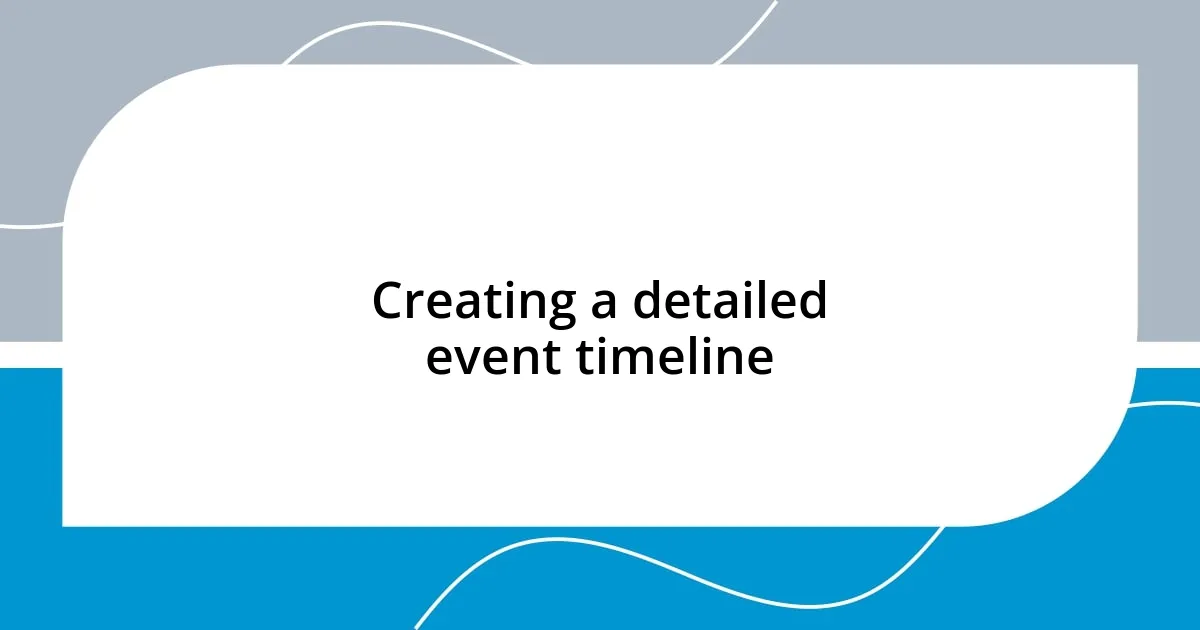
Creating a detailed event timeline
Creating a detailed event timeline is one of the most critical aspects that I focus on when preparing for live events. I recall a particular instance when I organized a charity run. My timeline was meticulous, detailing everything from the launch of registration to the very moment the participants crossed the finish line. This structure was invaluable during those busy days leading up to the event, allowing me to keep track of essential milestones and ensuring that nothing slipped through the cracks. It’s amazing how a well-constructed timeline can transform chaos into order.
When I develop my timeline, I prioritize effective communication with my team. For example, I always designate specific roles and responsibilities for each key point along the timeline. This way, everyone knows what’s expected of them and when. I’ve found that collaborating through a shared digital document fosters a sense of accountability and is a game changer for staying on the same page. Have you ever experienced that moment of panic when everyone seems to have different ideas on timelines? Trust me, having a detailed timeline can alleviate much of that stress.
Visualizing the timeline keeps me grounded. I often create a graphical representation of the events and deadlines. My go-to strategy includes color-coding tasks based on urgency and importance. This practice not only clarifies my workload but also serves as a motivational tool, allowing me to celebrate small wins along the way. I genuinely believe that seeing progress visually can ignite excitement, making the entire experience of event planning more enjoyable and resilient, especially during challenging periods.
| Key Component | Description |
|---|---|
| Milestones | Specific dates for key activities like venue bookings and vendor confirmations. |
| Roles & Responsibilities | Clearly define who is responsible for what at each stage of the timeline. |
| Communication Plan | An outline of how the team will stay updated and aligned, including regular check-ins. |
| Visual Representation | Utilizing charts or graphs to track progress and motivate the team. |
| Feedback Mechanism | A method for gathering input from the team post-event to enhance future planning. |
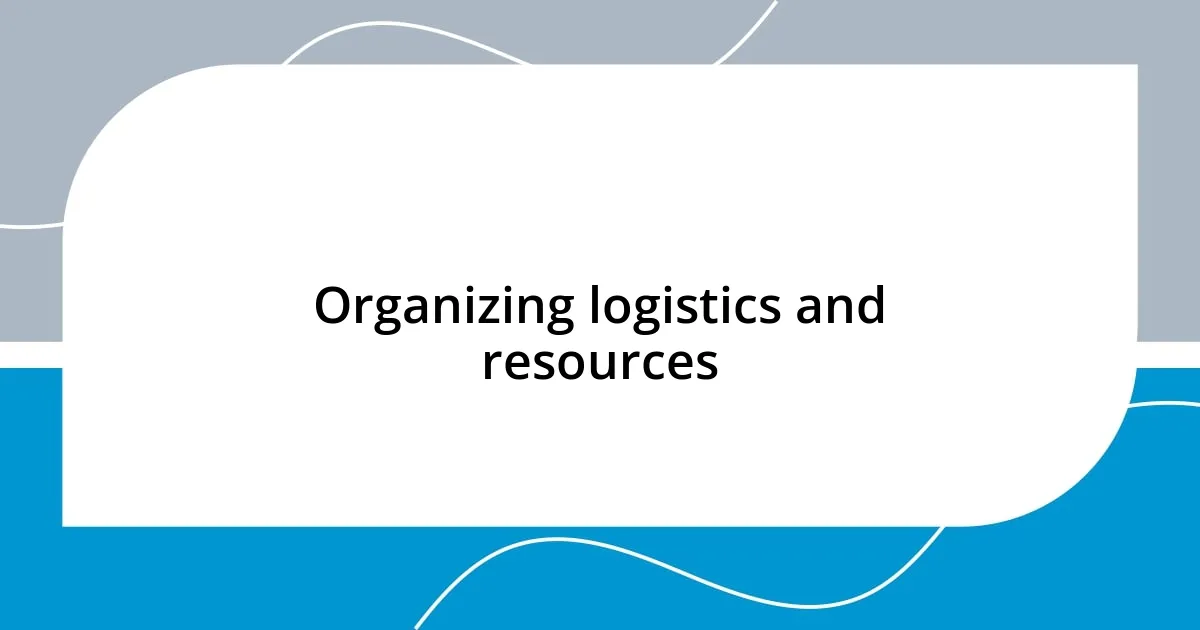
Organizing logistics and resources
Organizing logistics and resources is something I approach with a keen sense of detail and anticipation. I once was part of a large corporate conference where coordinating the venue, technology, and catering felt daunting at first. I began by creating a comprehensive list of all necessary resources, categorizing them into essentials like audio-visual equipment and logistics items such as seating arrangements. This breakdown not only simplified the planning process but also helped me visualize potential bottlenecks before they became issues—something I can’t stress enough.
I often think about the emotional rollercoaster pre-event can bring. For instance, on another occasion, I experienced last-minute vendor issues that could have derailed the entire event. To mitigate this stress, I always prepare a contingency plan which includes backup resources for critical components like equipment or catering. Have you ever faced a situation where the unexpected happened? I’ve learned that having alternate options readily available not only calms my nerves but also empowers my team to adapt quickly when needed.
Communication plays a pivotal role in organizing logistics. I believe everyone involved should be on the same page, so I host frequent check-ins with my team to discuss progress. During one memorable event, I realized that an open channel of communication helped raise potential concerns early on. By fostering an environment where everyone felt comfortable sharing, we tackled issues proactively, enhancing the event’s overall success. Ultimately, I find that the more prepared I am with logistics, the smoother the event flows, making it a more enjoyable experience for both me and the attendees.
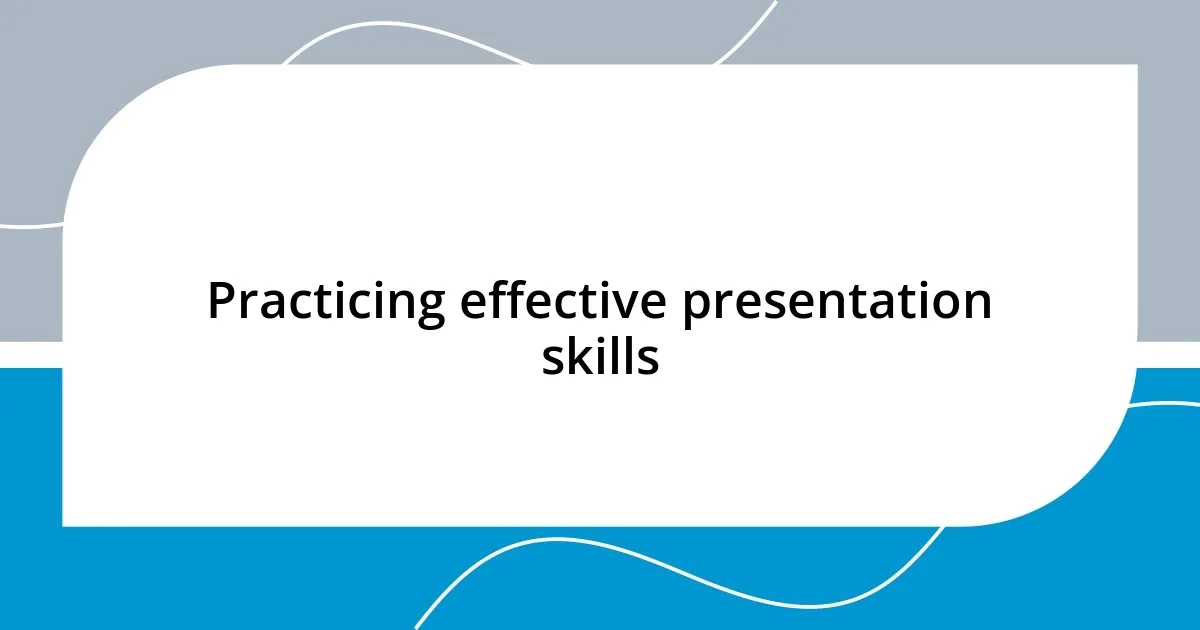
Practicing effective presentation skills
Practicing effective presentation skills is a critical aspect of my preparation for any live event. I remember the nerves I felt the first time I spoke in front of a large audience. To combat that anxiety, I started rehearsing in front of a mirror. Watching myself allowed me to identify awkward gestures and refine my tone, making me feel more confident as I presented. Isn’t it interesting how seeing ourselves can lead to strong improvements?
I always focus on structuring my presentations logically. I’ve learned that starting with a strong hook can capture the audience’s attention right away. For example, during a recent workshop, I opened with a thought-provoking question that immediately engaged the crowd. The energy in the room shifted, and I could feel their curiosity peak. Have you ever considered how a simple question can set the stage for an entire presentation?
Feedback is another crucial element in practicing my presentation skills. After rehearsing, I often seek input from trusted colleagues or friends. Their insights have guided me in adjusting my pacing or emphasizing key points that might resonate better. I still recall when a mentor pointed out how the right pause could enhance my delivery, adding depth to each statement. This practice of seeking feedback not only hones my skills but fosters a sense of community and collaboration, don’t you think?
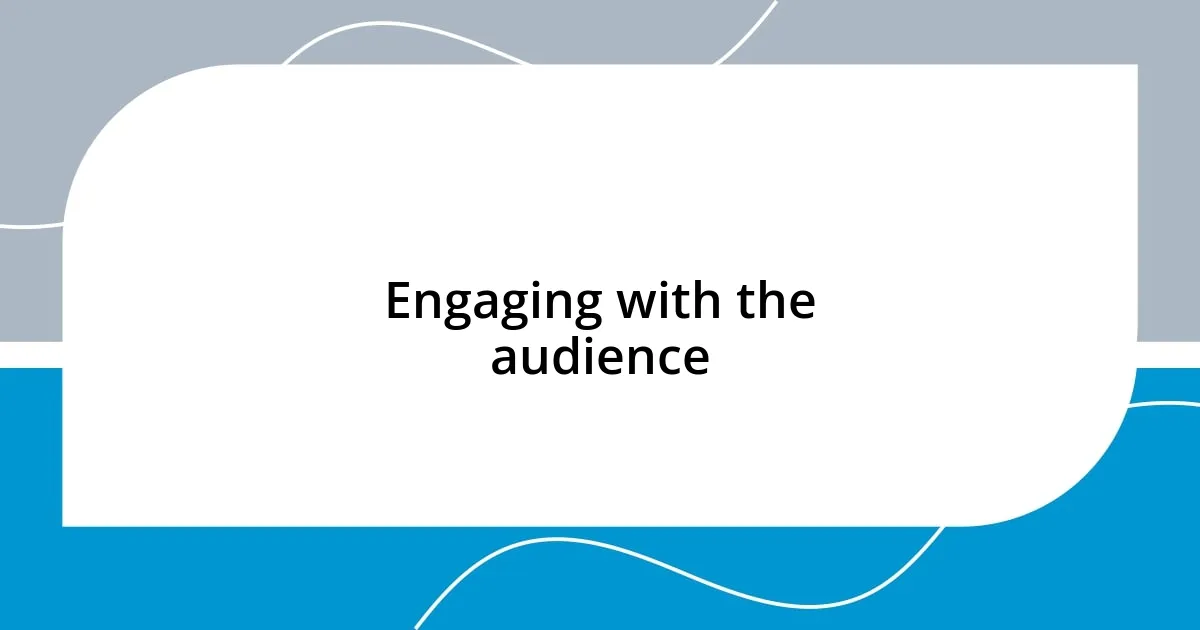
Engaging with the audience
Engaging with the audience is something I prioritize deeply during live events. I recall a time when I noticed the audience’s attention waning, and it hit me—capturing their interest is crucial. To remedy this, I began incorporating interactive elements like polls and questions throughout my presentations. Have you ever tried turning a one-sided talk into a lively conversation? It truly transforms the atmosphere, making everyone feel invested.
One memorable experience was during a seminar where I asked attendees to share their experiences related to the topic we were discussing. The resulting dialogue was electric! People were eager to voice their thoughts, and, surprisingly, that exchange not only brought fresh perspectives but also made my points more relatable. It felt as if we were all on this journey together, wouldn’t you agree? The energy shifted as we created a sense of community in the room.
I also make a conscious effort to read the room continuously. I remember a particular event where I sensed some initial disengagement. By adjusting my approach and inviting responses to specific examples, I began to see faces light up. It’s fascinating to witness how actively involving an audience can uplift the entire event. Recognizing and adapting to their reactions fosters a connection that’s not easily forgotten. How do you engage your audience during pivotal moments? I believe it’s all about creating a shared experience that resonates with everyone present.
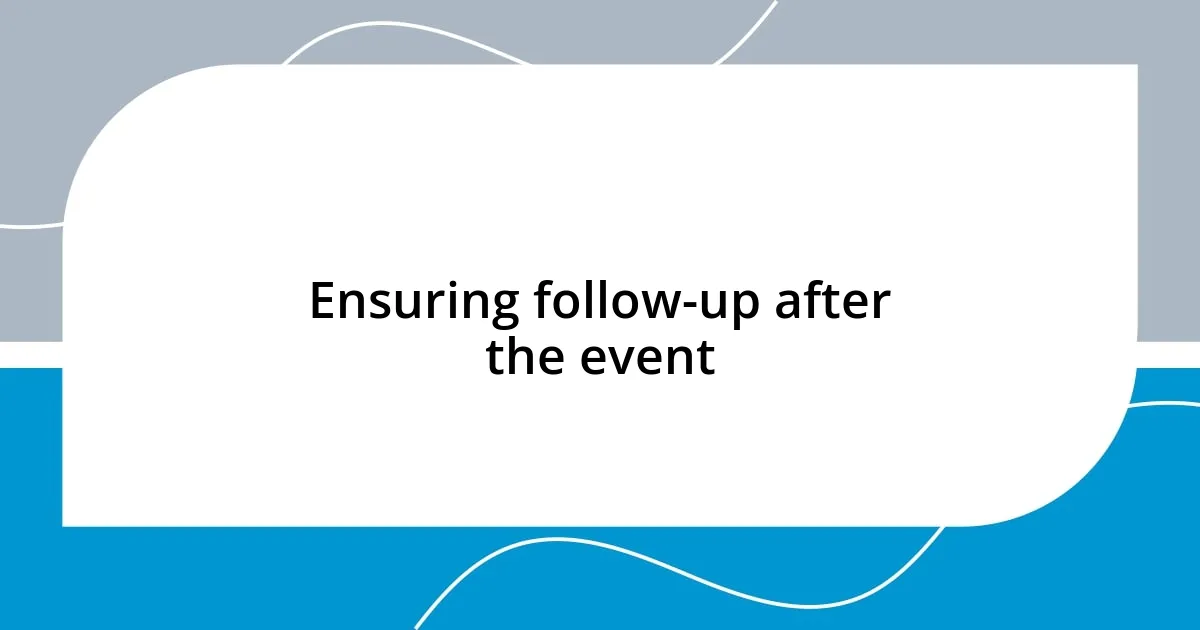
Ensuring follow-up after the event
After a live event, ensuring follow-up is essential to solidify the connections I’ve made. I vividly recall a networking session where I exchanged contact information with several attendees. A few days later, I sent personalized emails sharing resources related to our conversations, and it felt wonderful to rekindle that spark of connection. Have you ever seen how a simple message can reignite the enthusiasm from the event?
I find it invaluable to create a follow-up schedule. After wrapping up a successful workshop last year, I took time to jot down notes on the discussions I had with attendees. This way, I could tailor my follow-up communications according to their interests and feedback. It was exciting to see how people appreciated receiving a message that felt so personal. Isn’t it rewarding when your effort to remember specific details pays off in fostering those relationships?
Another technique I employ is hosting post-event discussions. After a recent conference, I organized a casual online chat where attendees could share their insights and experiences. It was heartening to see familiar faces and hear how my presentation had sparked further exploration in their own work. This gesture not only strengthened our bonds but also created an ongoing dialogue that enriched the experience for everyone involved. How important do you think it is to keep that conversation going after the applause fades? To me, it’s crucial—it transforms one-time interactions into lasting partnerships.


